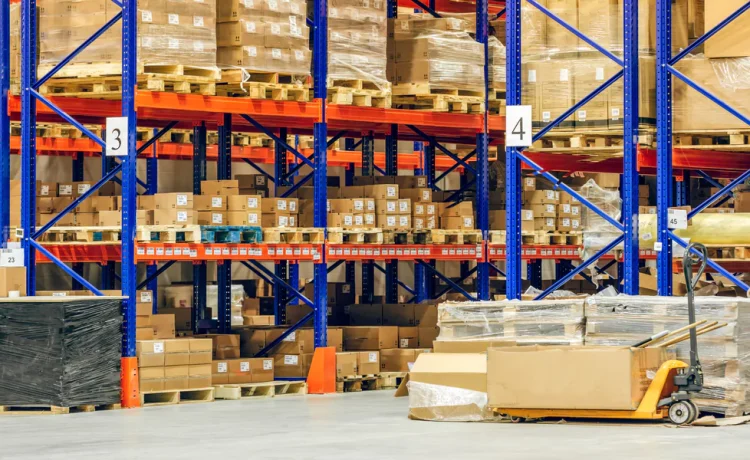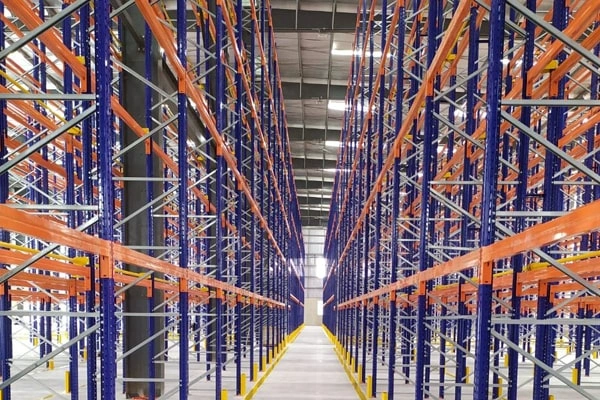Warehouse racking in Singapore has become the silent battleground where businesses either thrive or quietly collapse under the weight of inefficiency and missed opportunities. In a city-state where every square metre costs more than most people’s monthly salaries, the stories of triumph and failure often hinge on decisions made in windowless warehouses that most never see.
The Invisible Infrastructure That Shapes Our Lives
Walk through any HDB corridor and you’ll find products that travelled through Singapore’s vast network of warehouses before reaching your hands. Behind the gleaming façade of our port city lies a complex web of storage facilities, each one a testament to human ingenuity—or a monument to poor planning. The difference often comes down to the quality and design of warehouse racking systems that determine whether goods flow like water or pile up like debris after a storm.
In Jurong and Tuas, where the heartbeat of Singapore’s logistics industry pounds strongest, warehouse managers wake each morning knowing that their racking decisions will ripple through supply chains across Southeast Asia. These aren’t merely shelves; they’re the skeleton upon which our entire economy hangs.
When Storage Becomes Survival
The brutal mathematics of warehouse racking in Singapore tell stories that would make economists weep and entrepreneurs lose sleep. Consider the small importers in Kallang who discovered that upgrading their racking systems increased their storage capacity by 400% without expanding their footprint—a transformation that meant the difference between bankruptcy and prosperity.
These systems operate under pressures that would crush lesser infrastructure:
- Seismic loads from constant forklift traffic that would register on earthquake monitors
- Humidity extremes that turn metal into rust and dreams into dust
- Space constraints so severe that every centimetre becomes a strategic asset
- Regulatory compliance requirements that change faster than monsoon winds
- Cost pressures that force businesses to extract maximum value from minimum investment
The Architecture of Efficiency
Professional warehouse racking in Singapore represents more than engineering—it embodies the spirit of a nation that turned swampland into a global trading hub. The best systems blend German precision with Japanese efficiency, creating storage solutions that would make Le Corbusier jealous.
Modern racking installations utilise load calculations that account for everything from the weight of imported Norwegian salmon to the dynamic forces generated when a forklift operator rushes to meet a deadline. These systems must withstand not just the physical stresses of daily operations but the economic pressures of a marketplace that forgives no inefficiency.
Voices from the Warehouse Floor
“In Singapore, warehouse space isn’t just expensive—it’s existential,” explains a veteran logistics consultant who has witnessed the transformation of the city’s storage landscape over three decades. “The businesses that survive are those that understand that good racking isn’t a cost—it’s survival insurance.”
This wisdom echoes through the industrial estates where fortunes are made and lost based on inventory turns and storage density. The consultant’s words carry the weight of having seen promising businesses crumble because they treated warehouse racking as an afterthought rather than a strategic foundation.
The Psychology of Vertical Thinking
Warehouse racking in Singapore has evolved into an art form that would make urban planners envious. The best systems don’t just store goods—they create three-dimensional puzzles where every shelf serves multiple purposes and every aisle tells a story of optimised workflow.
The psychological impact on workers cannot be understated. Well-designed racking systems create environments where efficiency feels natural rather than forced. Employees move with purpose through clearly defined pathways, and the architecture itself guides behaviour in ways that reduce errors and increase satisfaction.
Technology Meets Tradition
Singapore’s warehouse racking systems increasingly incorporate smart technology that would seem like science fiction to previous generations. RFID integration, automated inventory tracking, and AI-powered placement algorithms transform traditional storage into intelligent ecosystems.
These technological advances serve practical purposes:
- Real-time inventory visibilitythat prevents stockouts and overstock situations
- Predictive maintenance alertsthat prevent catastrophic failures
- Automated reorder triggersthat maintain optimal stock levels
- Performance analyticsthat identify bottlenecks before they impact operations
- Integration capabilitiesthat connect warehouse operations to global supply chains
The Environmental Equation
Modern warehouse racking in Singapore reflects growing environmental consciousness. Systems designed for longevity reduce waste, whilst optimised layouts decrease energy consumption for lighting and climate control. The steel components, primarily sourced from recycled materials, support circular economy principles that align with Singapore’s sustainability goals.
Energy-efficient designs reduce operational carbon footprints whilst maintaining the productivity standards that make Singapore competitive in global markets. These environmental considerations resonate with consumers and regulatory bodies alike, making sustainability a strategic advantage rather than a compliance burden.
Investment Realities and Returns
The financial mathematics of warehouse racking in Singapore defy simple categorisation. Initial investments that seem substantial often pay for themselves within months through improved efficiency and reduced operational costs. The key lies in understanding that good racking systems aren’t expenses—they’re revenue generators that work around the clock.
Businesses that view racking investments strategically rather than tactically position themselves for sustained growth in an increasingly competitive marketplace. The difference between success and failure often comes down to decisions made in the early hours of planning, when warehouse design choices seem abstract but will determine concrete outcomes for years to come.
The Future of Storage
Singapore’s warehouse racking industry stands at the threshold of transformation. Emerging technologies promise even greater efficiency, whilst evolving trade patterns demand increased flexibility. The businesses that thrive will be those that view their storage infrastructure as living systems rather than static installations.
The evolution continues, driven by the same entrepreneurial spirit that transformed Singapore from colonial port to global city. In the quiet hours before dawn, when the city sleeps but the warehouses hum with activity, the next chapter of Singapore’s economic story unfolds on the shelves and aisles of facilities across the island, making warehouse racking in Singapore the invisible foundation upon which our visible prosperity rests.








